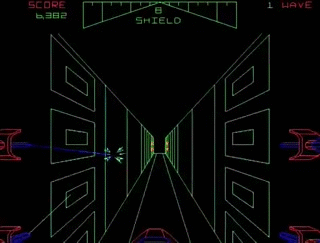Let The Wookie Win When You Play The Star Wars Arcade Game

It’s an old game, but it still checks out.
by Rich Watson
Unlike many children of my generation, I had no obsession with the Star Wars movies growing up. I saw Return of the Jedi when it came out, but for reasons that baffle me to this day, it never caught on with me the way it did with others.
Today, Star Wars is a billion-dollar, multimedia mega-franchise owned by the largest entertainment corporation in the world. Video games inspired by the movies have long been an integral aspect of that franchise. One of the first did grab my attention.
The early days of Star Wars gaming
The first Star Wars* movie and its history are well known.
In 1979, two years after the success of the first film, writer-director George Lucas formed the Lucasfilm Computer Division, which included the Lucasfilm Games Group. (Fun fact: the seeds of the group that would one day become Pixar grew here.) Atari, who held the video game development license for Star Wars, was a financial backer. Therefore, the first LGG-produced games were originals.
Later that year, Kenner released a tabletop game called Star Wars Electronic Battle Command. It was slightly different from the movie. (There were also Star Wars board games by this time.)
It wasn’t until 1982, two years after the Star Wars sequel, The Empire Strikes Back, that Parker Brothers released Star Wars: The Empire Strikes Back for the Atari 2600. When the third film, Return of the Jedi, came out in 1983, they produced two more home games, also for the Atari 2600: Return of the Jedi: Death Star Battle and Return of the Jedi: Jedi Arena.
Also that year, Star Wars made its arcade debut.
The military connection to Star Wars: The Arcade Game
In 1981, Atari’s Ed Rothberg designed a prototype version of their game Battlezone for the U.S. military. A group of retired generals acting as consultants wanted it as a training tool for a new tank, the Bradley Fighting Vehicle. Its steering yoke inspired Rothberg’s next project, a game referred to as “Warp Speed.” He left Atari before its completion.
By this time Atari’s licensing deal with Lucasfilm was in place. Mike Hally finished work on the new game and “Warp Speed” was officially renamed Star Wars.
The game recreates the climactic battle in the film between the Rebel Alliance and the Empire. The player is Luke Skywalker in his X-wing fighter. You battle Darth Vader and his TIE fighters in space before infiltrating the Death Star, getting past its defenses, and aiming for the exhaust port target that will destroy the space station. Once that’s accomplished, the mission repeats.
Sound bites by various characters from the movie are heard throughout the game. John Williams’ famous score from the film is recreated as well.
Atari released the game in the standard cabinet edition, which you play standing up, and a cockpit edition. You enter and play sitting down, as if you were piloting an X-wing for real.
Vector graphics
Like Battlezone, Star Wars uses a form of computer graphics called vector graphics. Lines and shapes are placed in a two-dimensional or three-dimensional space.
This is useful for anything designed to scale, including text, plus things like app and web development, animation and computer-aided design, such as in the program Adobe Illustrator.
Vector is different from raster graphics, which creates images with pixels. They’re less scalable.
Playing Star Wars
As I said, I saw Jedi first, before the first two films. My appreciation of the trilogy in general and Star Wars specifically may have been due as much to the game as the actual film.
I remember looking for the cockpit edition in the arcades I went to, but I played Star Wars even if I saw the cabinet version. The total immersion within the cockpit was almost like playing with your entire body. It wasn’t the only cockpit game during the eighties, but it was my favorite.
I don’t think I ever thought of the vector graphics as “inferior” in any way. The level of dimensionality compensated for the limited color scheme.
The steering yoke may have been more of an enticement for me. Pointing and firing at the TIE fighters and other targets with two hands felt like I had greater control.
The list of Star Wars video games is large and growing with each new movie and TV show. It’s safe to say there will always be a market for it.
High score
In 1985, a trio of players endured Star Wars for five days, two hours and twenty-six minutes to score 1,000,000,012 points. This, however, is not the official Twin Galaxies record because TG only acknowledges the harder tournament edition. In 2004, David Palmer scored 31,660,614 points to hold the TG record.
* Anytime “Star Wars” is italicized in this article, it refers specifically to the 1977 film.
————————
Have you played the 1983 Star Wars arcade game?



